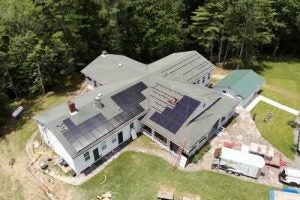There were some big changes to energy policy this year, and we gotta give it to em. They really tried hard to derail solar deployment. Axing the 30% residential solar tax credit is a blow, to be sure. But honestly, it’s gonna take more than that to squash an industry that delivers quick, cost-efficient energy in this moment of unprecedented demand and utility rate hikes.
That’s the stubborn thing about solar. As long as the sun is shining, there will be value in rooftop solar. Because here’s the thing – with the rapid growth of AI and data centers, particularly here in our region, utility rates are going to keep skyrocketing and there’s a good chance solar can save you money with or without a tax credit.
A few sticky facts remain:
- Solar is one of the cheapest forms of electricity on the planet and it can be deployed faster than any other kind of electric generation.
- Utility rates in Appalachia have jumped an average of 26% in the last 5 years alone. Even more here in West Virginia.
- Thanks to AI and data centers, the demand for electricity is climbing at an unprecedented pace, which will continue to drive rates ever higher.
What’s more? We’ve worked with industry partners to drop our pricing by 15%.
Why? Because here at the Holler, we’ve always found creative ways to make solar more affordable than utility power and we’re not deterred by this latest challenge.
Think about this: when our ancestors found coal and gas underground they didn’t say, “Aw, shucks… that stuff is pretty deep down in there and not easy to get to. We better let it be.” No – they saw there was value and they literally moved mountains to access it. Well, the sun beams down on planet earth every single day and it doesn’t take a herculean effort to harness its power. Solar will shine on.
Why? It comes down to this –
When you go solar you’re making a pretty safe bet that:
- You’re going to continue to use electricity.
- The cost of utility power will continue to rise.
The only question on the table is: What’s the better deal?
Let us crunch the numbers and find out if the cost of solar beats your utility. It starts with a free solar analysis.




